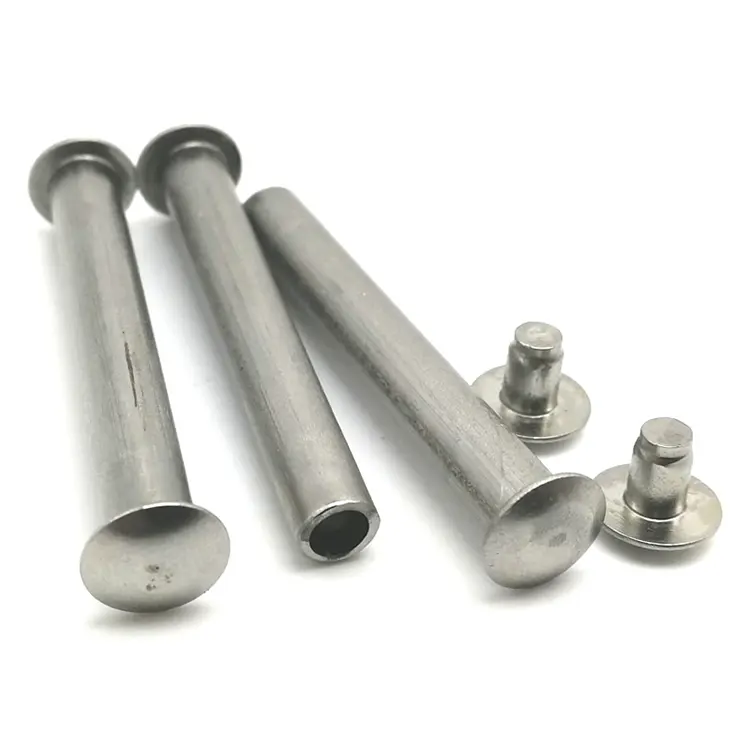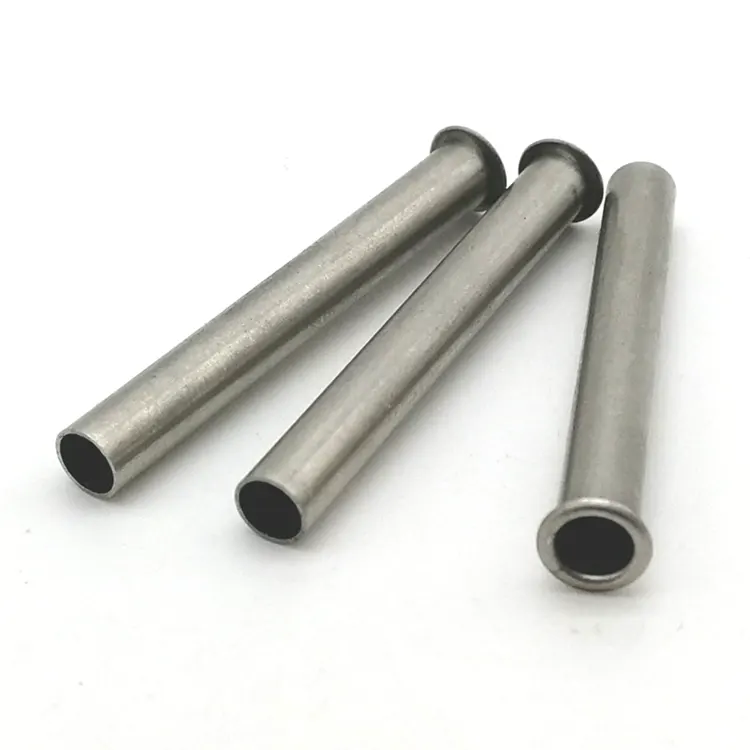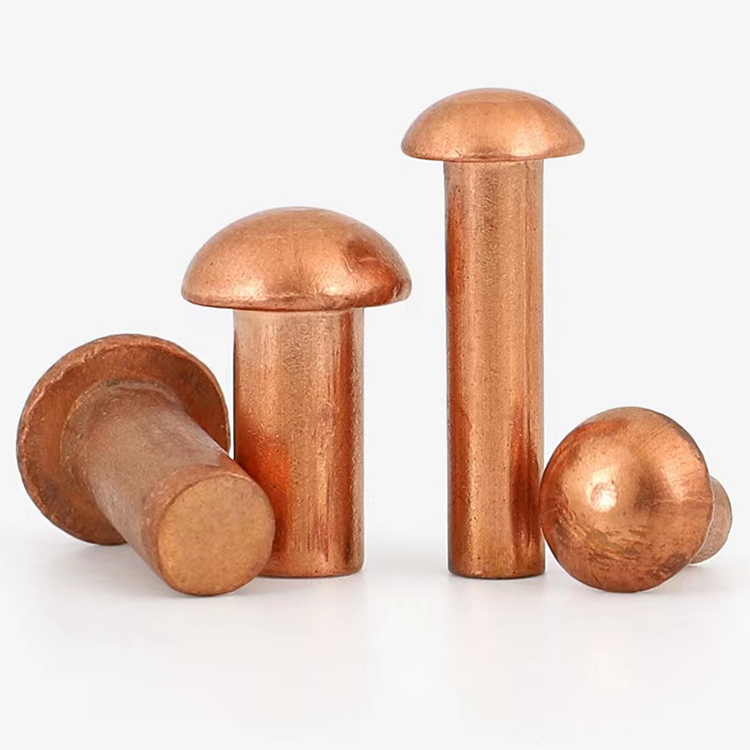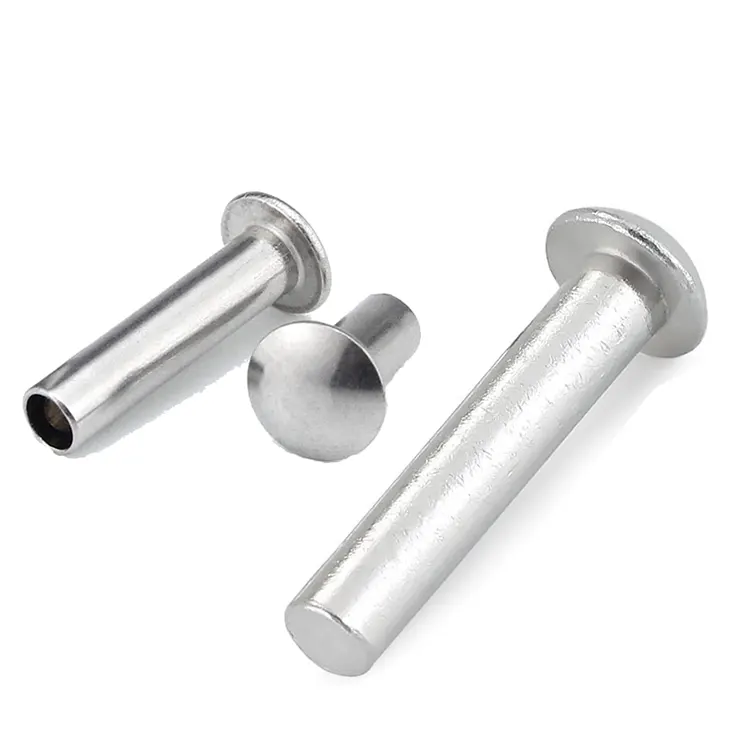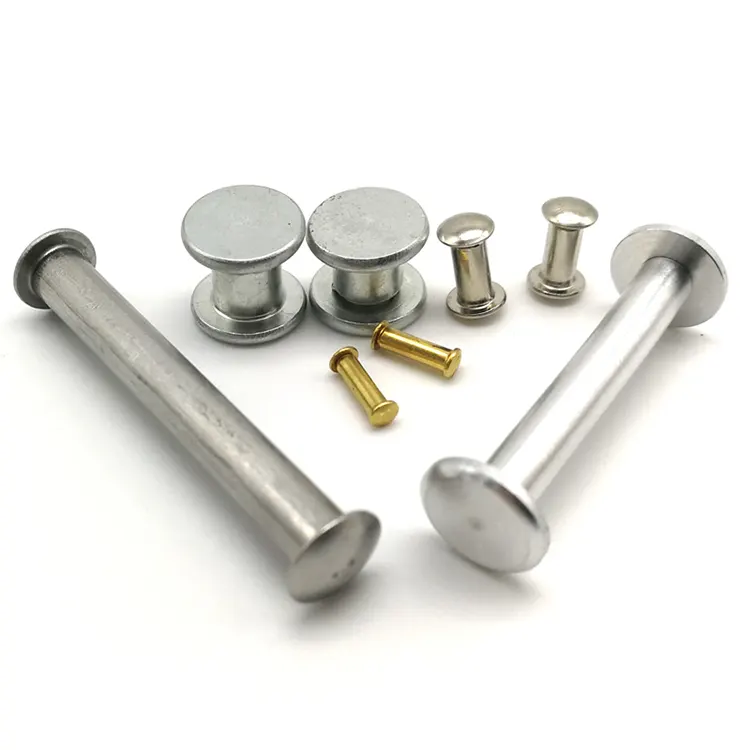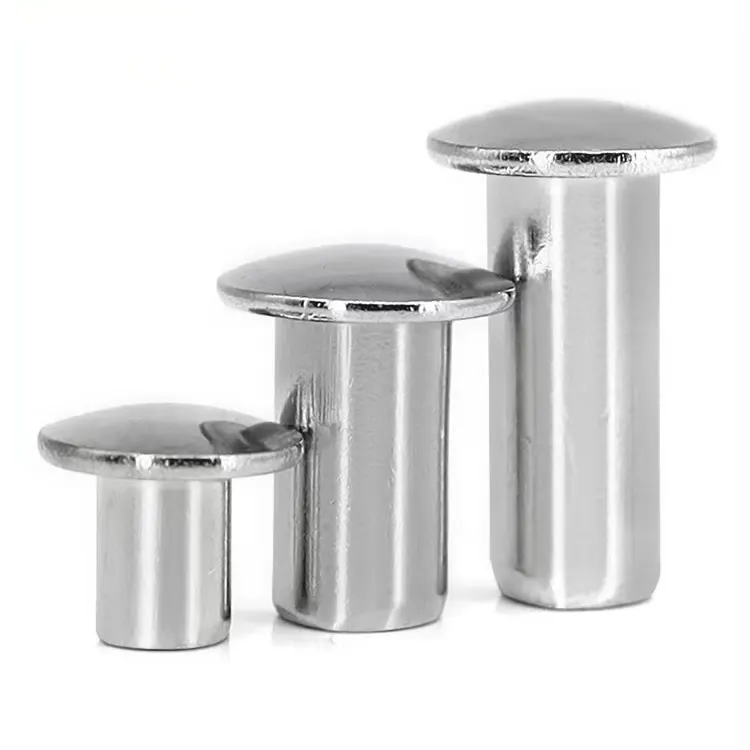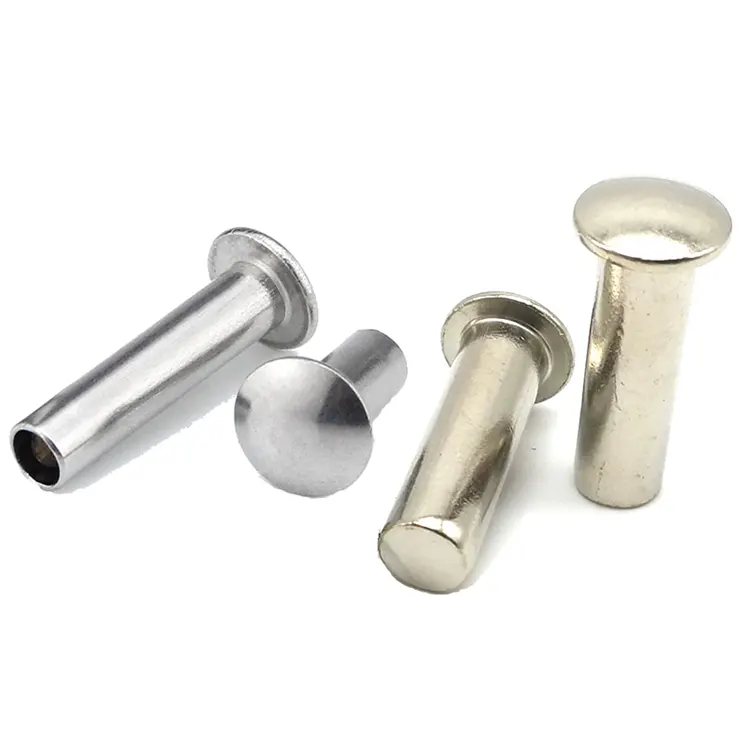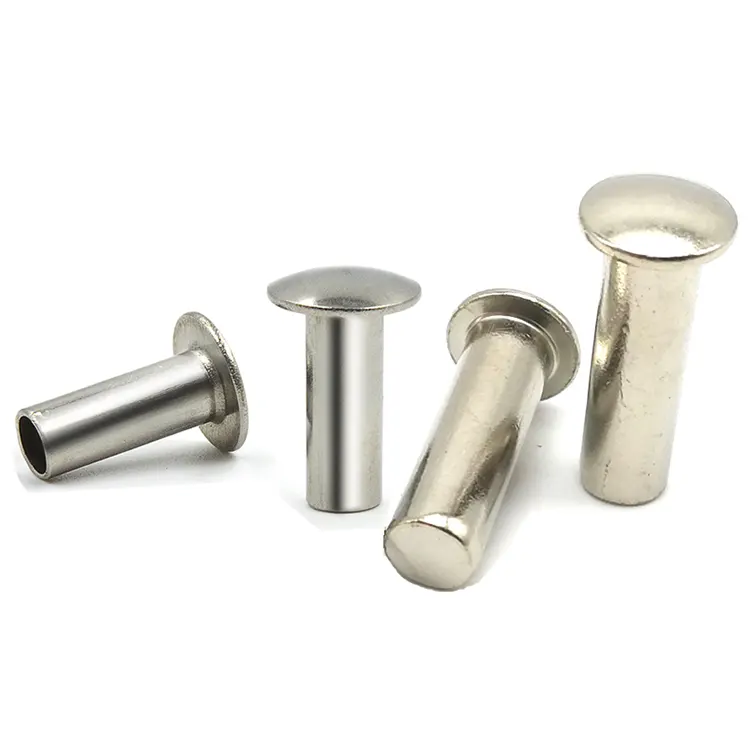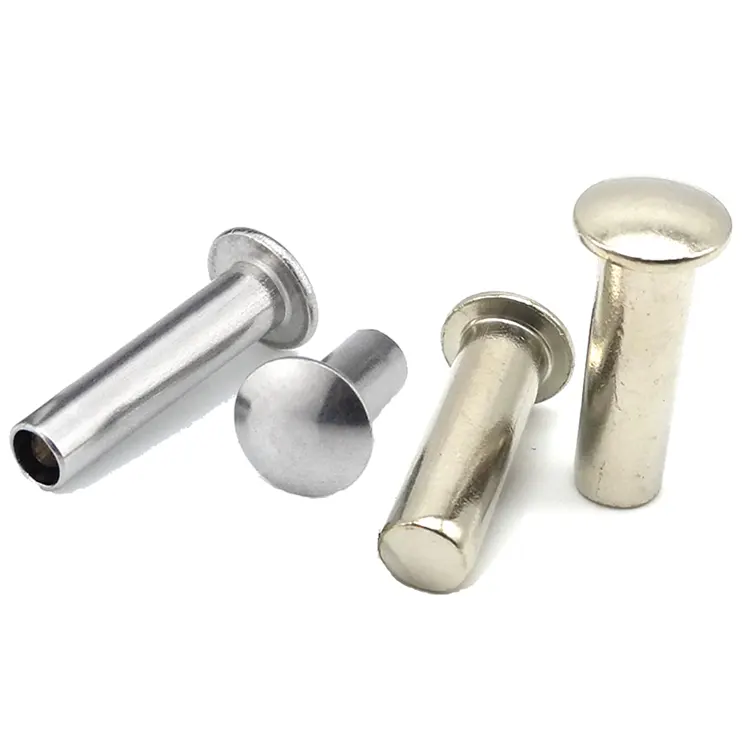Rivets speciali
One of Chinese manufacturer of Special Rivets, offering excellent quality at a competitive price, is Notin. Feel free to get in touch.
In the field of mechanical manufacturing and assembly, rivets are a common fastener used to professionally connect two or more parts. According to the degree of standardization, rivets can be divided into two categories: standard rivets and non-standard rivets. The size, shape and material of standard rivets are uniformly specified, while non-standard rivets are customized according to specific needs. The following will introduce the characteristics and applications of non-standard rivets from multiple aspects.
What are non-standard rivets?
Non-standard rivets are also called special rivets. They refer to rivets that do not meet national standards or industry general standards. Their size, material, structure and other parameters are designed and manufactured according to the specific needs of customers. Due to the different connection requirements of different industries and equipment, standard rivets may not meet the requirements of certain special scenarios, so non-standard rivets came into being.
What are the characteristics of special rivets?
(1) Strong customization: Non-standard rivets can be personalized according to factors such as the use environment, stress conditions, and assembly methods to ensure that they perform well in actual applications.
(2) Diverse materials: In addition to common carbon steel and stainless steel, non-standard rivets can also be made of special materials such as aluminum alloy, copper alloy, titanium alloy, etc. to meet different corrosion resistance, strength and weight requirements.
(3) Flexible structure: The structure of non-standard rivets can be adjusted according to needs, such as head shape, stem diameter, length, etc., and can even be designed to be hollow, semi-hollow or other special shapes.
- View as
Rivetti a testa universale
Un rivetto a testa universale è un tipo di componente di connessione meccanica nel sistema di classificazione dei rivetti. La sua testa ha una struttura piatta ad arco ed è adatta per unire materiali come lamiere sottili, pelle, tela e legno. Questo tipo di rivetto viene fissato tramite processi di rivettatura a freddo o a caldo e presenta i vantaggi di una facile installazione e di un buon rapporto costo-efficacia in ambienti sottoposti a pressione non sigillati. Rispetto a prodotti simili come i rivetti a testa svasata, i rivetti a testa universale sono più adatti per rivettare lamiere sottili o materiali non metallici come pelle, tela e legno grazie al design della testa emisferica sporgente.
Per saperne di piùInvia richiestaRivetti in due pezzi
I rivetti in due pezzi sono generalmente costituiti da due parti: un rivetto femmina e un rivetto maschio. Il rivetto femmina ha un foro interno ad un'estremità e un'estremità fissa all'altra. Il rivetto maschio, come un solidorivetto a gradino, si inserisce nel foro interno del rivetto femmina. Per utilizzarlo, fissare prima il rivetto femmina a un oggetto, quindi inserire il rivetto maschio nel rivetto femmina e martellarlo in posizione, unendo così i due oggetti. Questo design semplifica l'installazione fornendo allo stesso tempo una forza di connessione affidabile. Nuote Metals ha 10 anni di esperienza lavorativa con questo tipo di rivetti in due pezzi, non esitare a inviarci il tuo disegno.
Per saperne di piùInvia richiestaRivetti con testa a traliccio
Nuote Metals produce e vende rivetti con testa a traliccio. Siamo situati a Dongguan, in Cina, e disponiamo di oltre 40 macchine per stampaggio a freddo in grado di produrre un'ampia gamma di specifiche e tipi di rivetti. Offriamo anche rivetti personalizzati. I rivetti con testa a traliccio sono un componente rivettato comune, costituito da un gambo, una testa e una coda. Sono caratterizzati da una testa larga e piatta e da una coda cava o piena, che forniscono eccellenti proprietà di tenuta e impermeabilità.
Per saperne di piùInvia richiestaRivetti a testa tonda in acciaio
Nuote Metals produce e vende rivetti a testa tonda in acciaio in una varietà di finiture, tra cui zincatura, nichelatura e placcatura Dacromet. I rivetti a testa tonda presentano una forma della testa semicircolare, che offre un'eccellente resistenza alla trazione e al taglio, in grado di sopportare carichi pesanti. Il design a testa rotonda consente al rivetto di conformarsi meglio al componente di collegamento durante la connessione, migliorando la stabilità e la tenuta del giunto.
Per saperne di piùInvia richiestaRivetti in acciaio
I rivetti in acciaio al carbonio sono un elemento di fissaggio meccanico comune utilizzato in un'ampia varietà di prodotti industriali e di uso quotidiano. La loro funzione principale è collegare in modo sicuro due o più componenti insieme, creando una struttura stabile. I rivetti in acciaio al carbonio sono apprezzati per la loro resistenza, durata e convenienza. Nuote Metals produce rivetti in acciaio al carbonio da oltre un decennio. Situata a Dongguan, in Cina, conosciuta come la "Fabbrica del mondo", diamo il benvenuto ai visitatori di tutto il mondo che vengono a trovarci.
Per saperne di piùInvia richiestaRivetti a testa cilindrica in acciaio
I rivetti a testa cilindrica in acciaio sono un elemento di fissaggio industriale comune utilizzato in un'ampia gamma di applicazioni, tra cui l'industria automobilistica, l'aviazione e l'edilizia. Nuote Metals è specializzata nella produzione di rivetti a testa bombata in acciaio, venduti in tutto il mondo. Offriamo una vasta gamma di rivetti realizzati in vari materiali, tra cui ottone, acciaio inossidabile, alluminio e rame. Possiamo anche personalizzare i nostri prodotti con vari trattamenti superficiali, come galvanica, decapaggio e anodizzazione, per soddisfare le esigenze del cliente.
Per saperne di piùInvia richiestaWhat are the characteristics of special rivets?
(1) Strong customization: Non-standard rivets can be personalized according to factors such as the use environment, stress conditions, and assembly methods to ensure that they perform well in actual applications.
(2) Diverse materials: In addition to common carbon steel and stainless steel, non-standard rivets can also be made of special materials such as aluminum alloy, copper alloy, titanium alloy, etc. to meet different corrosion resistance, strength and weight requirements.
(3) Flexible structure: The structure of non-standard rivets can be adjusted according to needs, such as head shape, stem diameter, length, etc., and can even be designed to be hollow, semi-hollow or other special shapes.
Manufacturing process of special rivets
The manufacturing of non-standard rivets involves multiple links, mainly including:
1.Material selection: Select suitable metal or alloy materials according to the use environment. 2. 2.Cold heading or hot heading: Use pressure processing to form the basic shape of the rivet into the metal blank.
3.Turning or milling: Fine-process the details such as the head and stem of the rivet to ensure dimensional accuracy.
4.Surface treatment: Such as galvanizing, nickel plating, anodizing, etc. to improve corrosion resistance or aesthetics.
Advantages and limitations of special rivets
(1) Advantages: They can meet special needs, improve assembly efficiency and connection reliability, and are suitable for complex or high-demand application scenarios.
(2) Limitations: Since they are customized products, the production cost is high, the delivery cycle is relatively long, and customers are required to provide detailed technical parameters.
How to choose suitable special rivets?
(1) Clarify the needs: Determine the key parameters such as the rivet's operating environment, stress conditions, and corrosion resistance requirements.
(2) Material matching: Select the appropriate material based on actual needs to avoid over-design that leads to increased costs.
(3) Communicate with suppliers: Provide detailed technical drawings or samples to ensure that the non-standard rivets produced meet expectations.
What are the main applications of special rivets?
(1) Aerospace: Aircraft, rockets and other equipment have extremely high requirements for the weight, strength and high-temperature resistance of fasteners. Non-standard rivets can be optimized according to specific needs.
(2) Automobile manufacturing: Certain special models or high-performance vehicles may require non-standard rivets to meet the needs of lightweight or high-strength connections.
(3) Electronic equipment: Precision instruments or small electronic equipment may require micro non-standard rivets to ensure the stability and compactness of the connection.
(4) Construction industry: Some special-structured buildings or decoration projects may use non-standard rivets to meet specific installation requirements.
Market status of special rivets
With the advancement of industrial technology, more and more industries have begun to use non-standard rivets to optimize product design. At present, non-standard rivet manufacturers are mainly concentrated in the Yangtze River Delta and Pearl River Delta regions in China, and can provide a variety of customized services. Due to the high unit price of non-standard rivets, its market size is relatively small, but the demand in the high-end manufacturing field continues to grow.
Future development trends
(1) Lightweight design: With the improvement of energy-saving and environmental protection requirements, non-standard rivets made of lightweight materials will be more popular.
(2) Intelligent production: Automated equipment and digital management will further improve the production efficiency and quality stability of non-standard rivets.
(3) Wider application: Emerging industries such as new energy and robotics may drive the growth of demand for non-standard rivets.
In summary, special rivets are highly customized fasteners that can meet special needs that standard rivets cannot meet. Although its production cost is relatively high, it plays an irreplaceable role in industries such as aerospace, automobiles, and electronics. In the future, with the advancement of manufacturing technology, the application scope of non-standard rivets is expected to further expand.

